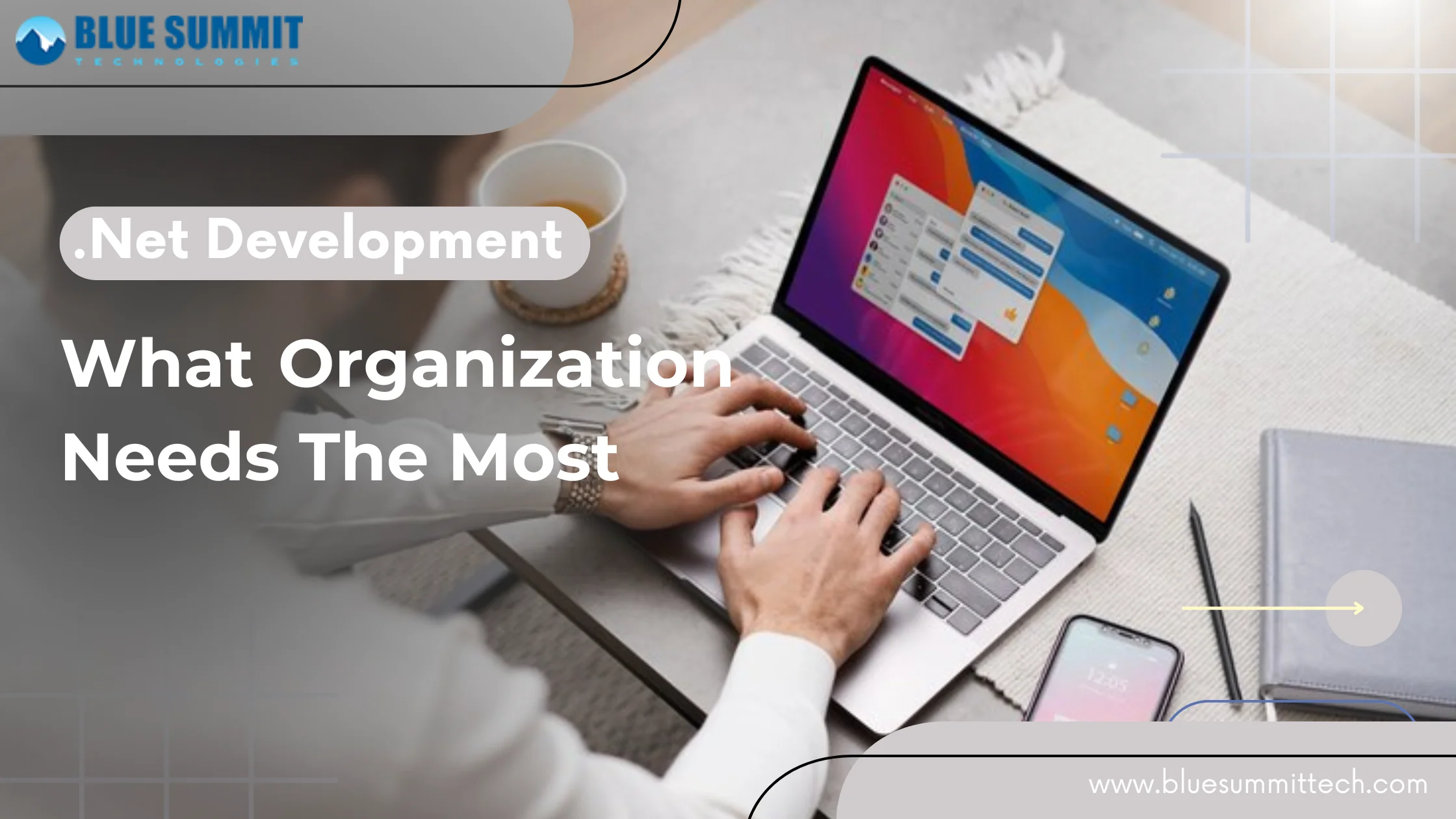
Technology has become the cornerstone of almost every business. With the right technology, businesses can reach their goals and fulfil both their potential and the ambitions of their shareholders.
However, determining what technology or solutions are best for the organisation can be a very daunting task.
Even the smallest firms need an expert to determine their current IT needs and develop a proactive plan to help their companies grow whilst ensuring a sound foundation for their information technology needs. However, hiring a person full-time and then retaining them can be an expensive undertaking. So how can a Virtual Chief Information Officer help? Well...
A Virtual CIO fills those knowledge gaps!
A virtual CIO should be an expert at designing technology plans for small, medium, and large businesses. A vCIO will understand what the business is doing today and its technology needs for the future.
The vCIO discusses the company goals and direction with the management team. The officer can then develop a 1, 3, or even a 5-year plan to implement, enhance and streamline the business technology requirements and in turn help you to exceed your goals.
With the right systems in place, technology will start to drive more business and improve business processes across the organisation. Not to mention, saving you on expensive purchasing mistakes, keeping your IT budget in check and ensuring you install and deploy technology properly.
So let's start from the beginning...
What is a Virtual CIO?
A vCIO is a contracted company or professional that plays the same roles as a traditional chief information officer (CIO). The primary role of a conventional CIO is to align a company’s IT strategy and resources with its current and future business needs.The officer plays the same role as a traditional CIO but on a contract basis. A CIO is a full-time employee working in the IT department. Sometimes, companies need more resources to hire a qualified full-time CIO. One IT expert assumes the role of keeping the IT department running.
He is an expert in IT strategy who works part-time to help a business develop and implement a long-term strategy. The contractor has vast experience and the necessary tools to improve and maintain a client’s IT infrastructure.
The officers offer flexible, affordable, and scalable IT services. The professionals have a broad, objective, and authoritative view of the existing IT strategy. In most cases, they are more experienced and knowledgeable than the in-house team.
What Does a Virtual CIO Do?
1. Aligning the IT strategic plan with business goals
A virtual chief information officer advises the client on the technological expertise and tools necessary to achieve better business results. Hence, constant communication with the management team is essential for the vCIO to understand the business objectives.vCIOs may have independent ideas of what a business needs, which may need to be more accurate. Ensure that you outline your expectations and business principles. The virtual chief information officer should enable you to achieve your business objectives.
2. Keeping up with technology trends
Technology reinvents itself every few years. Companies can hardly keep up with a trend before it evolves into something else. Most IT staff members focus on keeping everything running, including outdated apps and infrastructure.The officer brings a new and objective perspective on business technology and strategic planning. The experts are versed in current and upcoming trends in IT. Hence, they can help businesses align their short-term and long-term IT plans with changing trends.
3. Project planning and budgeting
Competent officers are experienced in guiding organisations in cost optimisation and IT budgeting. The professionals help business owners to estimate the cost of investing in new technologies and the ROI of existing technologies.4. Improving an organisation’s understanding of IT
Many businesses maintain outdated systems and technology because of a limited understanding of IT and because they cannot afford to hire the required expertise on a full time basis. Such businesses need more resources to hire experienced IT experts. Sometimes, the senior leadership needs to be aware of technological changes.A vCIO helps the management and IT staff understand the importance of updated IT systems and their impact on business performance. The officers fill the knowledge gaps and guide the leadership in investing in the right business technology, which ultimately will save a lot of money.
5. Advising clients on information security
Cyber security is a concern for every business owner. They advise companies on the best strategies for data security. The right vCIO understands the trends in cyber security and recommends internal changes to improve information security.6. Evaluating current skills
They can assess your team’s skills and their alignment with your goals. The service is necessary if the vCIO will hand over some projects to your in-house staff after the contract. You can make staffing decisions based on the vCIO’s objective advice.Why Do You Need Virtual CIO Services?
Your business needs vCIO services if the IT department is limited in workforce, skills, expertise, and experience. You also need contracted services if you do not have an IT department.Small and medium-sized businesses lack the financial resources to hire full-time CIOs. A vCIO is ideal for such firms because they can access IT expertise at a reasonable price.
vCIO services are flexible and scalable. For instance, you can hire a vCIO for a specific project, such as installing and managing new IT infrastructure. The professional can help with large-scale projects such as digital transformation while the in-house staff handles daily IT needs.
Major IT transformations in a business require an objective opinion of the existing strategy and services. Virtual CIOs offer a fresh perspective and objective view of your company’s IT strategies. The view is independent of internal politics and personal career goals.
Hiring virtual CIO services has advantages and shortcomings, as outlined below.
Advantages of Hiring a vCIO
1. Lower costs for IT expertise: Your business will access years of experience and expertise at a lower cost. An in-house CIO requires a salary and benefits, not to mention the high recruitment and onboarding costs.2. Objective ideas and perspectives: The virtual chief information officer gives an objective opinion of your IT issues and recommends an objective solution. The professionals are independent of internal politics and business-minded.
3. IT cost optimisation: The vCIO will help you decrease expenses through robust IT infrastructure and increase the ROI for future technologies. In addition, the vCIO builds relationships with suppliers to help you save costs further.
4. A quick onboarding process: The recruitment and onboarding process for a vCIO is cheaper and faster than a traditional CIO's. The vCIO is available to work immediately after the contractual agreement.
5. Disaster planning and mitigation: Your IT staff may have limited skills and knowledge for disaster planning. A qualified vCIO will help your organisation prepare for disasters and minimise risks and losses from unforeseen circumstances.
6. Improved cyber security: vCIOs keep your systems and apps updated with the latest security measures to boost information security. The experts can identify weaknesses in your existing systems that may lead to security breaches and provide the appropriate solutions.
7. Stay ahead of technological changes: You have enough time to build your core business because the vCIO follows the latest trends in business technology. The virtual CIO service can implement digital transformation to improve efficiency in business operations.
Disadvantages of Hiring a Virtual CIO
1. Virtual interactions instead of face-to-face interactions: The vCIO works remotely and may be unavailable for emergency meetings. Most vCIOs offer 24 hours support but differences in time zones may affect their responsiveness to emergencies and unforeseen crises.2. Limited knowledge of daily operations and business needs: It takes a while for the vCIO to understand the flow of internal operations and activities. The contractor may take weeks to understand the culture and values. Constant communication is essential to help the virtual CIO understand the company’s needs and preferences.
3. Over-qualification for small businesses: Virtual CIOs are overqualified to work in small firms or organisations that require basic systems to manage their operations. The services are best suited to large-scale IT projects.
How Much Does A Virtual CIO Cost?
The pricing structures vary for vCIOs based on the project and level of engagement. Some charge a flat fee on a subscription basis, allowing you to pay monthly for the service package. You can cancel the subscription anytime or upgrade depending on your budget.Some vCIOs charge an hourly rate, which varies based on the project and level of expertise. The salary for a full-time CIO ranges from £180,000 to £250,000. A vCIO charges significantly less, whether you pay hourly or monthly.
The Bottom Line
A vCIO implements and manages IT infrastructure that aligns with your business goals and needs. You save the high costs of hiring a traditional CIO but access the same level of expertise. A vCIO will also keep your business in step with technology changes and recommend robust strategies for cyber security.Contact us for assistance in hiring the right vCIO for your business.
Blue Summit has collaborated with OdiTek Solutions, a frontline custom software development company. It is trusted for its high service quality and delivery consistency. Visit our partner's page today and get your business streamlined.
REFER TO OTHER RELEVANT CONTENTS

Virtual CIO
Technology has become the cornerstone of almost every business. With the right technology, businesses can reach their goals and fulfil both their potential and the ambitions of their shareholders. However, determining what technology or solutions are best for the organisation can be a very daunting...
read more







